Affiliate links on Android Authority may earn us a commission. Learn more.
The best car security cameras: Protect your car even when you're not around
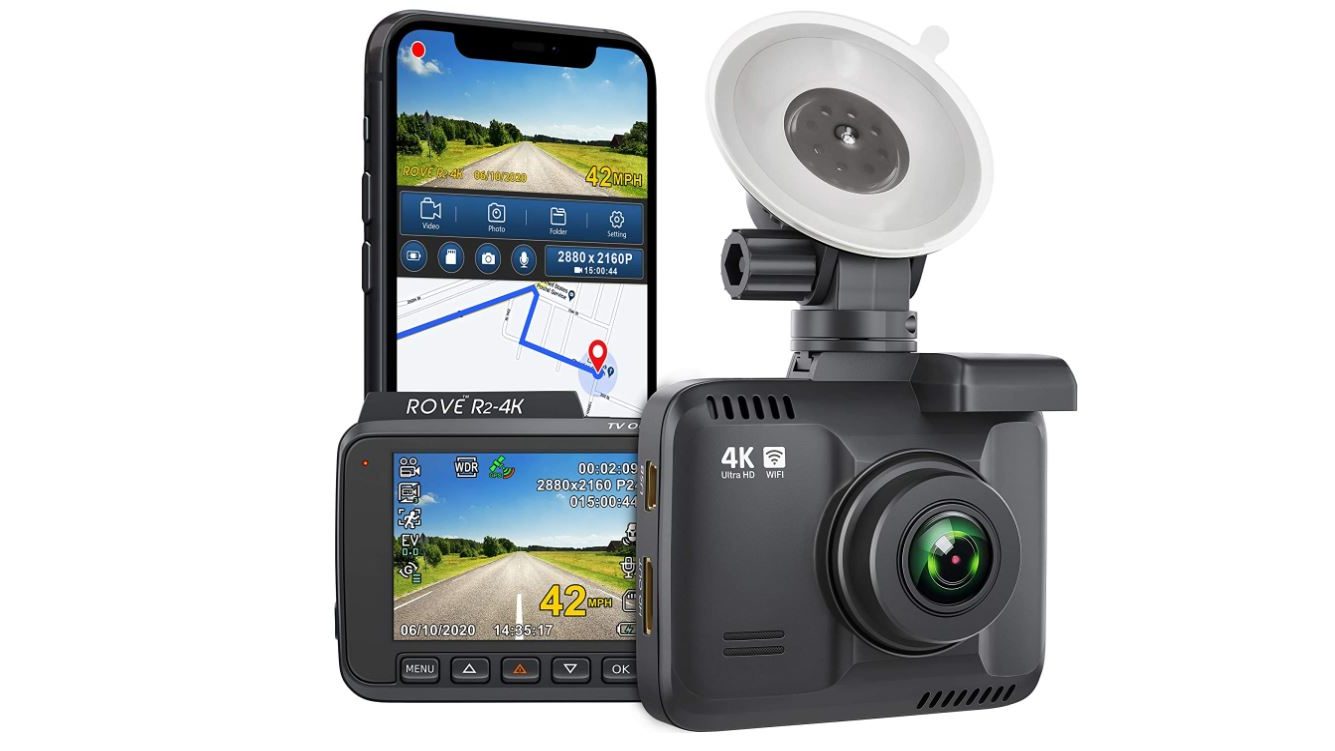
Car security cameras can be a major aid if you’re involved in an accident, vandalism, or a break-in. Many of them offer 24-hour recording on a loop, and the same often have a gravity sensor that detects impacts, letting you know exactly when an incident occurred. Either way a camera can protect you and your property, sometimes regardless of whether you’re even present. If it comes down to insurance claims or legal charges, footage can support your case with video and/or audio evidence.
There are a variety of car security cameras to choose from. We’ve broken down the options into mini cameras, front-only cameras, or dual dash cameras that give you multiple angles.
Best car security cameras:
Mini camera options
Larger, front-only camera options
Dual dash camera options
Mini camera options
A mini or compact dash camera is perfect if you want the security of continuous recording, but want it to be a little more discreet. That’s a relative term — if someone is intentionally looking into your car, they’ll probably see a camera behind your rearview mirror. But these cameras are so small and inconspicuous that anyone simply walking by might be oblivious. As a bonus, the cams in this category tend to be cheaper than others.
Garmin Dash Cam Mini 2
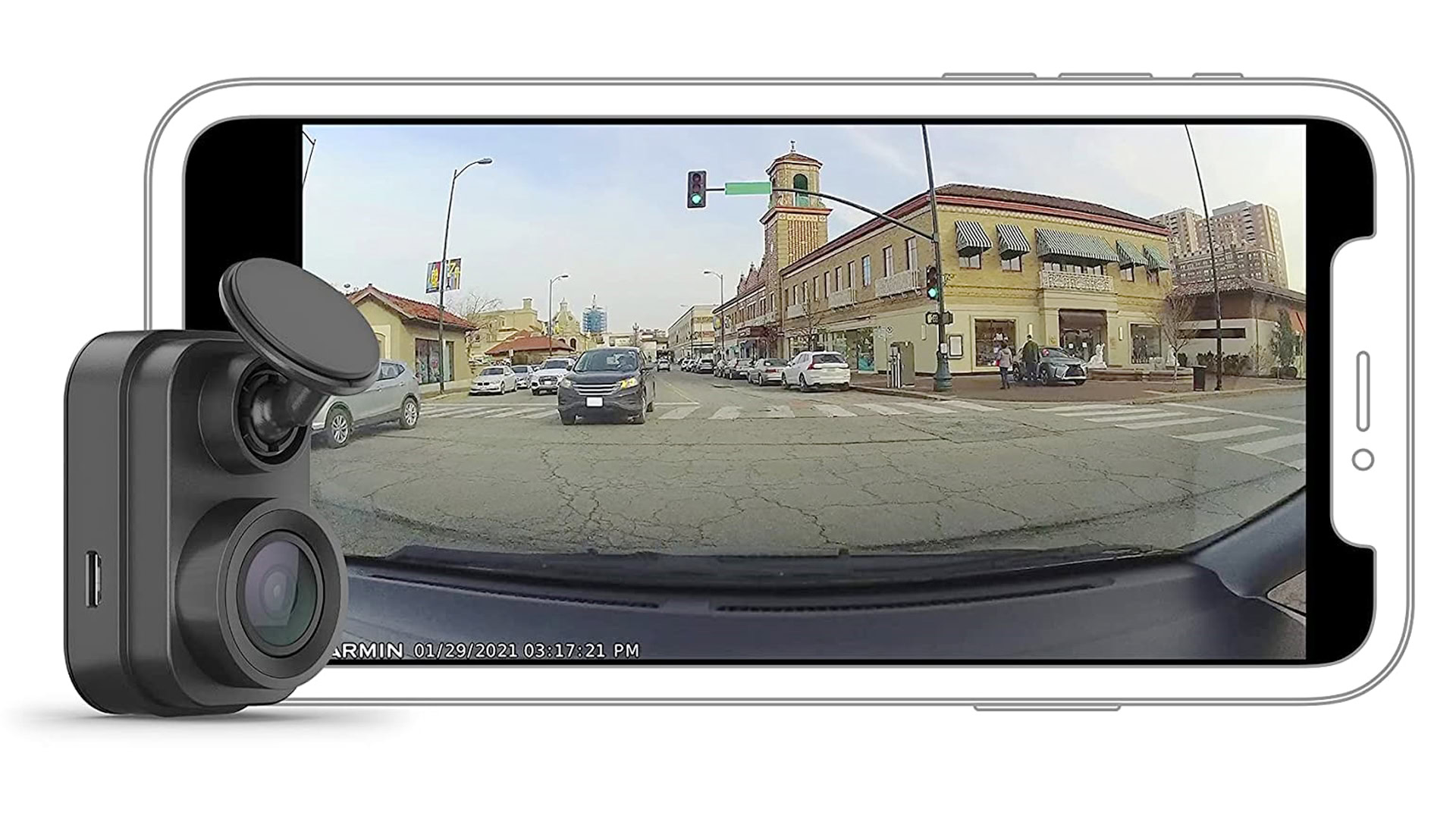
The Dash Cam Mini 2 is one of the most expensive mini options, so if price is your leading concern, it might be better to go with something like the Apeman below.
You get what you pay for, though. The Mini 2 is about the size of a car key, and captures footage in 1080p with a 140-degree wide-angle lens and HDR (high dynamic range). It connects with the Garmin Drive app on your phone, which gives you access to a ton of cool features, including of course the ability to view, edit, and share dash cam footage that’s uploaded to your phone over Wi-Fi.
Voice control can be used to start and stop recording, and Live View and Parking Guard features can be enabled so long as your camera has constant power and a Wi-Fi connection. There’s even a bonus USB port so you can charge other devices on the road.
If you like the idea of dual dash cams but don’t love their typically bulky designs, Garmin has you covered there too. You can use up to four Dash Cam Minis to capture video from all sides of your vehicle, after which Drive can sync recordings.
Apeman C420D
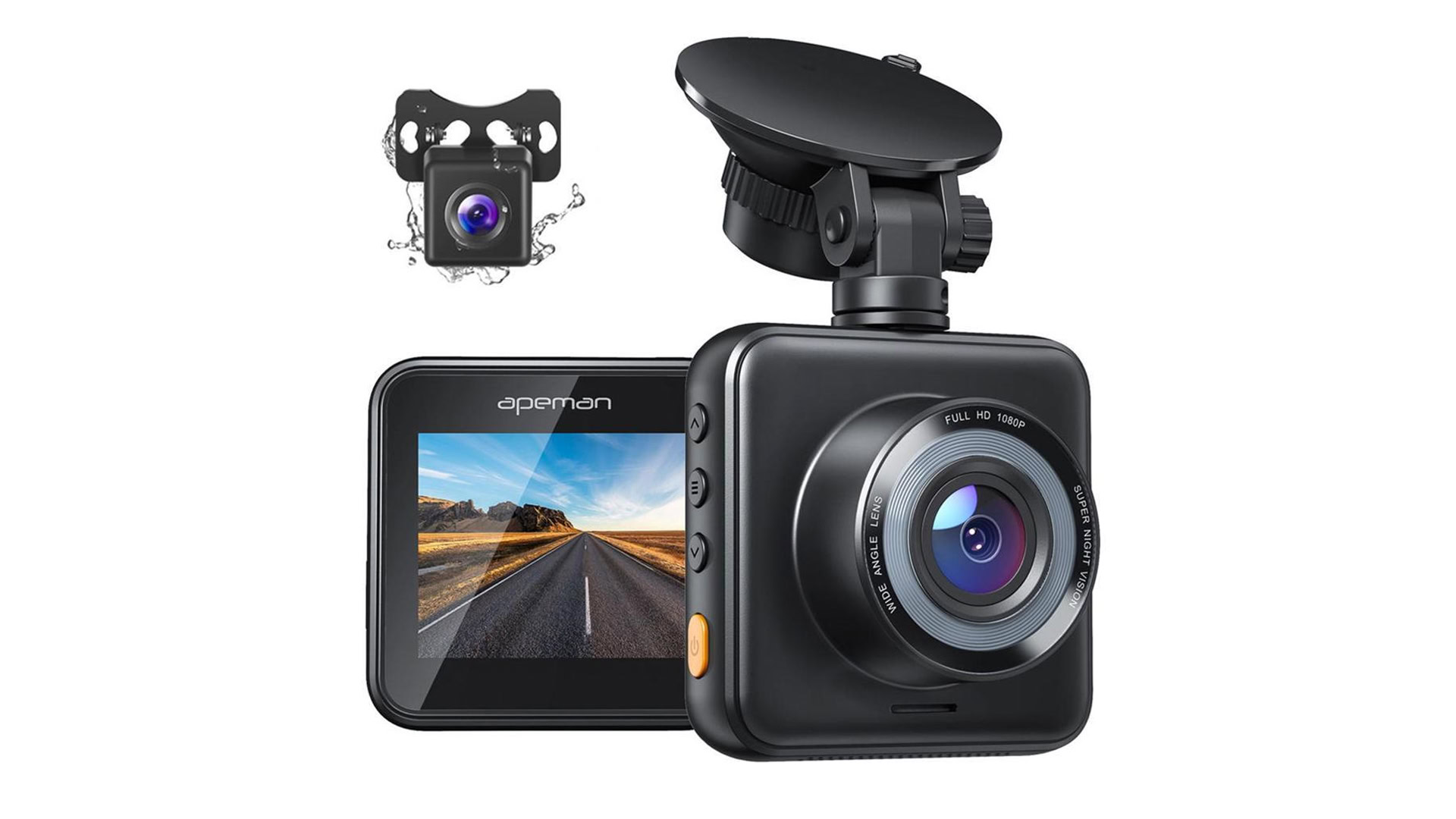
The C420D is larger than Garmin’s offering, partly due to its screen. Its party trick, however, is a bundled 720p rear-view camera that complements the primary one. We wouldn’t expect too much from this secondary unit, but it is waterproof for mounting outside your car, and both cameras have a 170-degree field of view. The main camera shoots 1080p video at 30 frames per second.
Standard features like a gravity sensor, loop recording, and parking monitoring are in tow. You’ll need a buy microSD card with 32 to 128GB of storage, but otherwise you’re looking at an extremely affordable product costing $60 or less.
Larger, front-only camera options
If you want a camera that gives you the clearest possible recording, but you only care about what’s happening in front of your car, try one of these two options. Bigger dimensions enable crisper recordings because of the room (and budget) for more advanced sensors.
Garmin Dash Cam (67W)
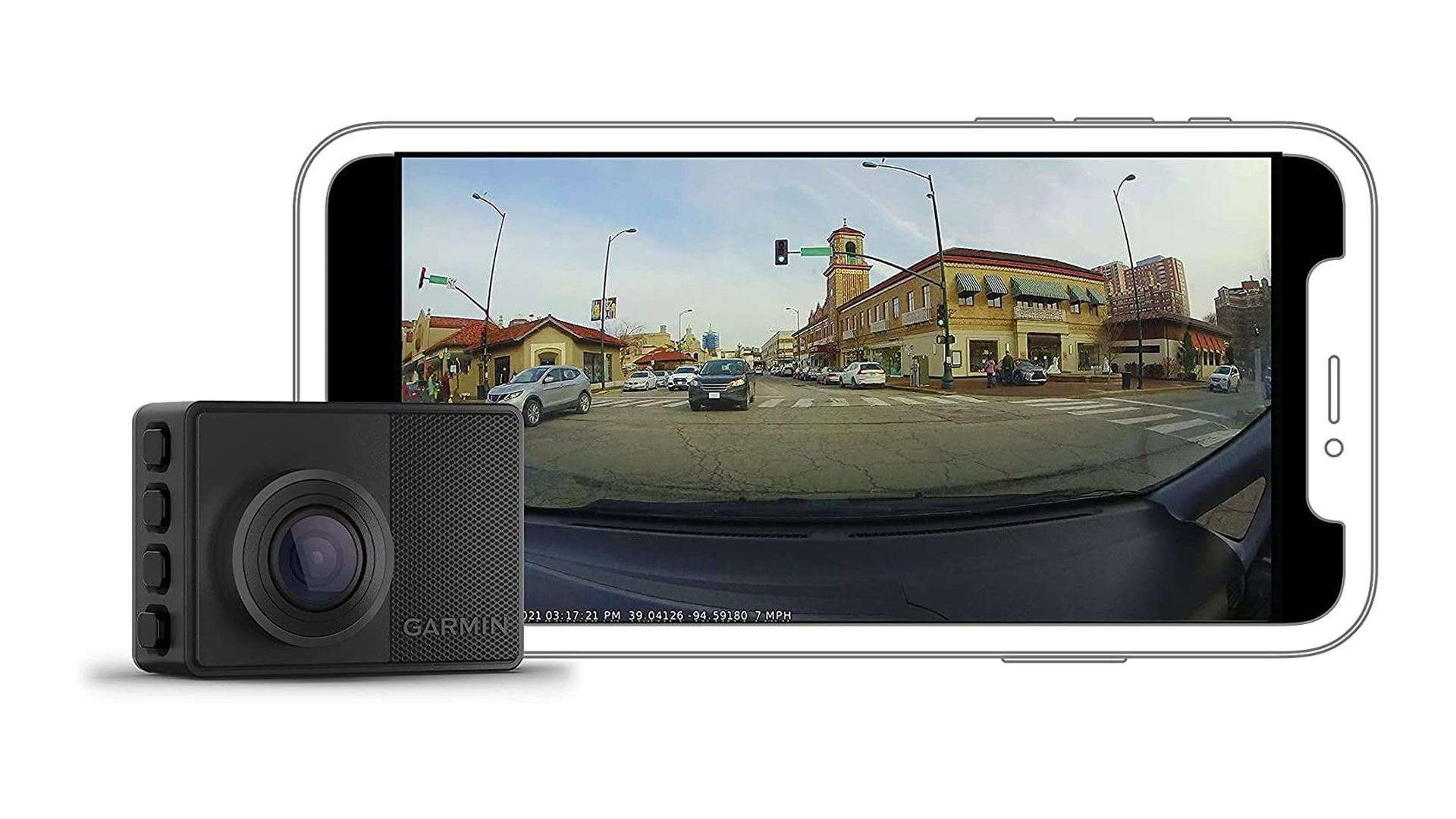
Rove R2-4K Dash Cam

Despite its name, the Rove R2-4K records in 2160p. That still makes it sharper than most rivals, and that’s paired with quality night vision as well as a 150-degree wide-angle lens. As with many cams, you’ll need to buy your own microSD card, and it’s strongly recommended that you get a U3-speed card from Rove — many other cards aren’t compatible, even if it looks like they should be on paper.
There are many other features here, such as a built-in GPS receiver that records your driving location and speed. You can even view your route and tracking in Google Maps by way of the Rove app, which additionally manages recordings. That app has been a bit shaky in the past, but recently received a major update including both bugfixes and new features.
Dual dash camera options
Dual dash cams are just what they sound like — you get two cameras that record simultaneously. Our first two options have one camera facing out the front of your car, and a second facing the interior. The last option, the Vava Dual Dash Cam, switches out interior coverage for a camera aimed behind your vehicle.
All of these products are going to be some of the most expensive, for obvious reasons, but if you ever get into an accident and need proof, you’ll have multiple angles while retaining image quality.
Vantrue N2 Pro Uber Dual Dash Cam
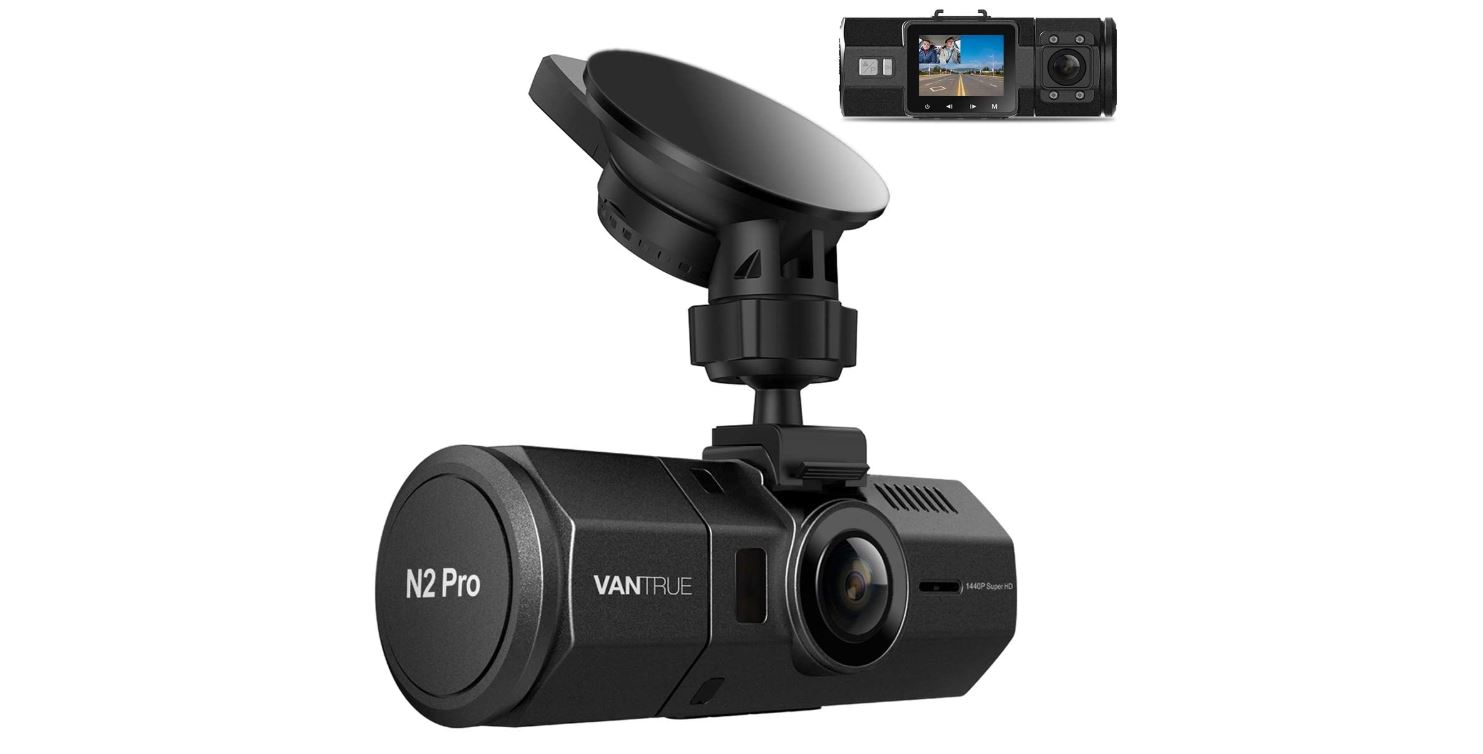
Vantrue’s N2 Pro Uber records footage from the front of your car and inside your cabin. The front-facing camera uses an OV4689 sensor and an HDR system to help automatically balance light and dark areas. The interior camera, meanwhile, sports a Sony Exmor sensor and four LED lights.
Running both cameras simultaneously caps resolution at 1080p, but if you use the front-facing camera alone, you can bump it up to 1440p. We should also note that the front-facing camera offers a 170° lens, while the interior view is a narrower 140°. Video is saved on microSD cards sized up to 256GB.
An alternative from Vantrue is the X4S Duo, which boasts improvements like a 4K front camera. It’s far more costly however, and swaps interior coverage for the rear exterior, so it’s not for everyone.
Garmin Dash Cam Tandem
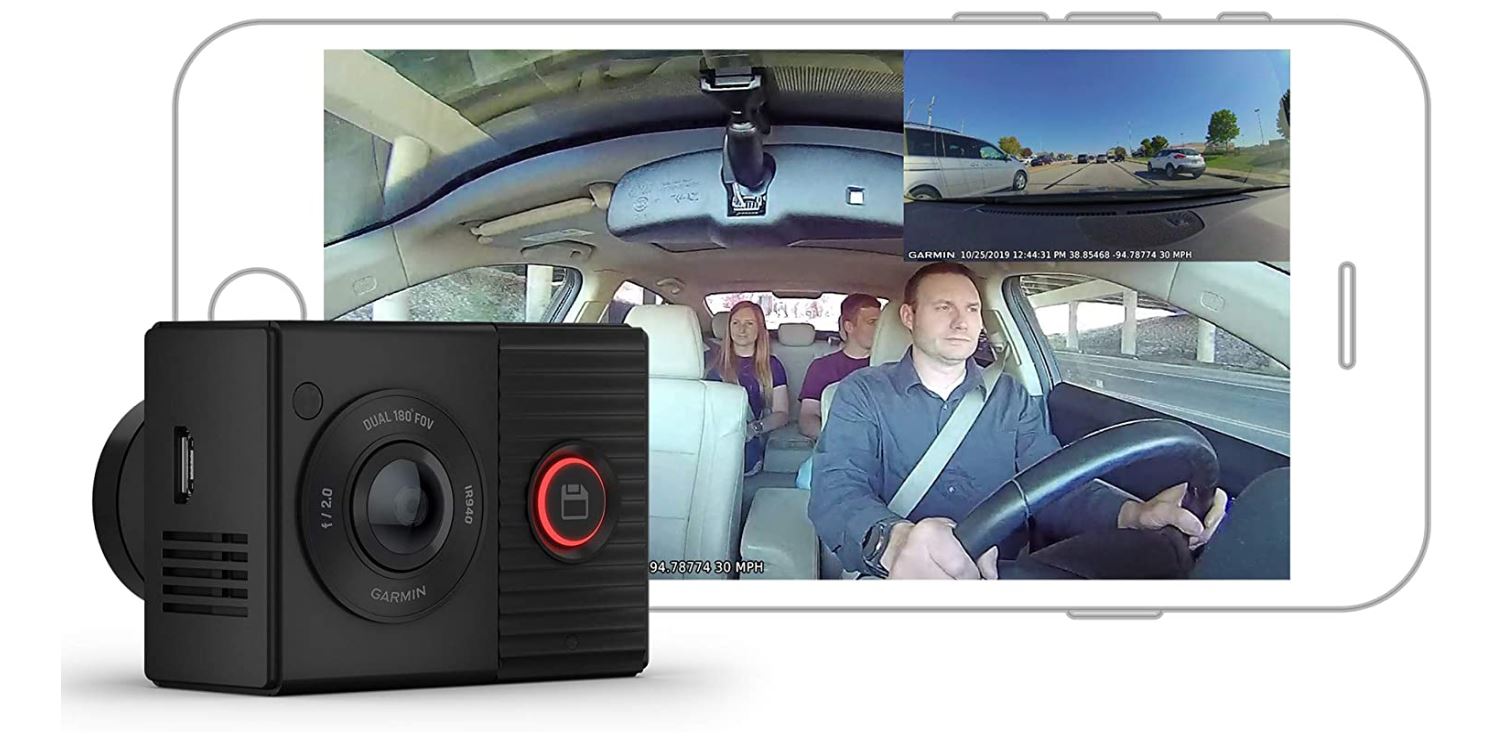
Garmin’s dual-camera entry tries to remain as compact as possible. It’s pocket-sized, yet still has two 180° lenses, with a 1440p front-facing camera and a 720p interior shooter. The interior camera is equipped with NightGlo technology that promises quality images when it’s dark.
The Tandem does have a hefty price tag, but it might be worth it for features like GPS and voice control. Garmin also bundles a microSD card, as with the standard Dash Cam.
Some features are of course shared with other Garmin models, such as the Garmin Drive app and multi-cam recording sync. In fact, you could buy a Tandem and a Mini to enable whole-car surveillance.
Vava Dual Dash Cam
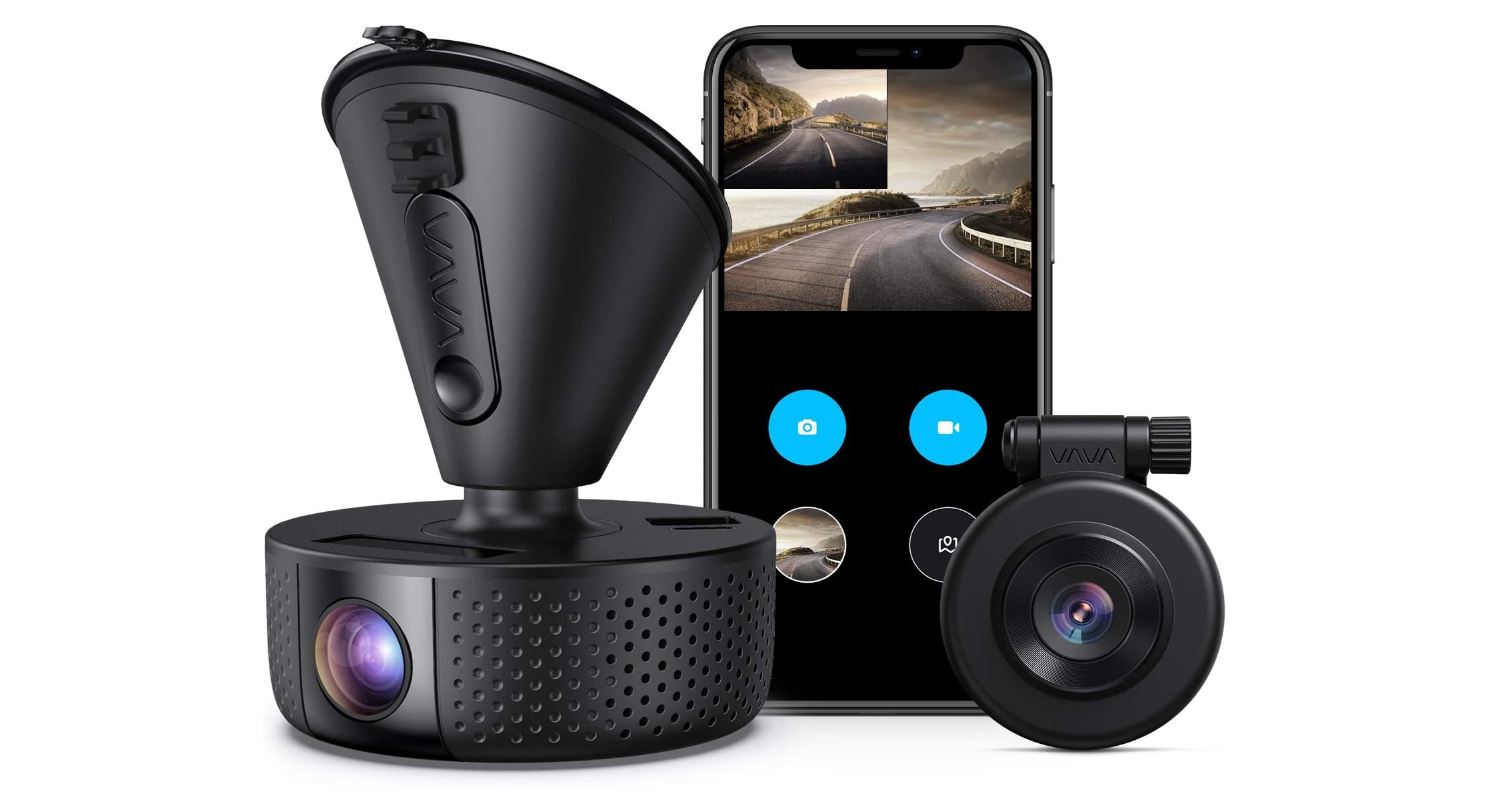
As mentioned earlier, the Vava Dual Dash Cam splits its cameras between the front and rear of a car, ignoring the interior. Each one records in 1080p, though like the Vantrue, you can switch to 1440p if you use the front camera alone.
Sony sensor technology is said to enhance low-light sensitivity while providing clean video. There’s loop recording, and video is saved to microSD cards up to 128GB. With built-in Wi-Fi and the Vava Dash app, you can view, download, and even livestream content.
One of the best things about Vava’s camera is something called the One-Touch Snapshot Remote. This is a button you attach to your steering wheel so you can easily capture photos and videos in high-stress situations. You press the button once to take a picture, and hold it down for a short video clip.
Whether you’re wanting to set up a security system to prevent theft or cover yourself if you get into an accident, any of these dash cams could be useful. Choose a mini camera if you want the most subtle approach. If you want video of multiple angles, go with one of the dual dash options. If your preferences fall somewhere in between wanting a small device and crisp recording, choose one of the front-only models.